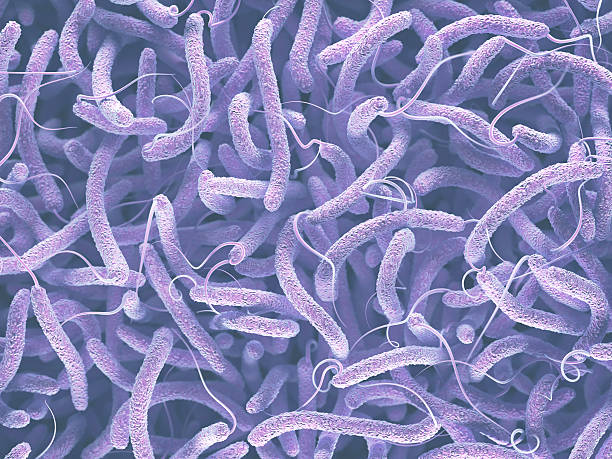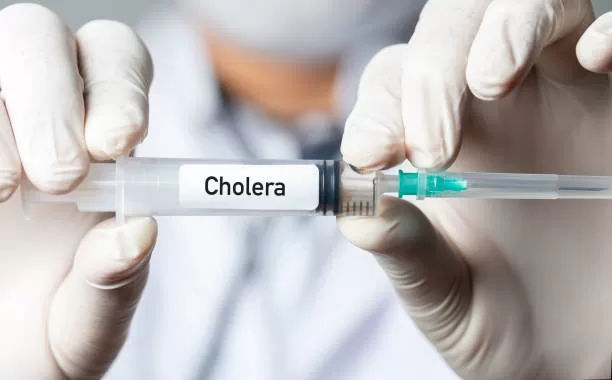
Cholera, a highly contagious and potentially life-threatening bacterial infection, has plagued humanity for centuries. Despite significant advancements in healthcare, cholera remains a persistent global health concern, particularly in regions with limited access to clean water and sanitation. This article aims to shed light on what cholera is, its impact on health, and the preventive measures that can help curb its spread.
Cholera is caused by the bacterium Vibrio cholerae, primarily transmitted through contaminated water and food. The disease is prevalent in areas with inadequate sanitation systems, overcrowding, and poor hygiene practices. When ingested, the bacterium multiplies in the intestines and releases a toxin, leading to severe watery diarrhoea and dehydration. Water quality testing plays a vital role in preventing cholera by identifying and addressing potential sources of contamination. It enables the detection of harmful bacteria, including Vibrio cholerae, the causative agent of cholera, in water sources.
By implementing regular and comprehensive water quality testing, the following benefits can be achieved. Early detection of contamination through water quality testing helps identify the presence of pathogens, such as Vibrio cholerae, in water sources. By monitoring water quality on a regular basis, potential contamination can be detected early, allowing for swift response and preventive actions to be taken before an outbreak occurs.
Assessing the Safety of Drinking Water: Testing water quality ensures that drinking water is safe for consumption. It helps determine if water treatment processes, such as disinfection, filtration, and chlorination, are effectively removing or inactivating pathogens, including cholera-causing bacteria. This is particularly important in areas with inadequate water treatment infrastructure.
Identifying High-Risk Areas: Water quality testing can help identify high-risk areas where contamination is more likely to occur. By pinpointing areas with compromised water sources, authorities can prioritize interventions, such as improving sanitation infrastructure, implementing targeted vaccination campaigns, and promoting hygiene practices, to prevent cholera outbreaks.
Monitoring Water Sources: Regular testing of water sources, including rivers, lakes, wells, and piped water systems, allows for ongoing monitoring of water quality. This helps detect changes in water conditions, such as increased bacterial levels or the presence of pollutants, which could pose a risk to public health. Timely monitoring enables prompt action to be taken to address any issues and protect the population from cholera and other waterborne diseases.
Guiding Water Treatment Strategies: Water quality testing provides valuable data that informs decision-making regarding water treatment strategies. The results of testing help determine the appropriate methods and technologies required to treat water effectively and eliminate or reduce the presence of cholera-causing bacteria. This includes implementing disinfection techniques, upgrading filtration systems, and ensuring adequate water storage and distribution practices.
Evaluating Sanitation Practices: In addition to monitoring water quality, testing can assess the effectiveness of sanitation practices in preventing water contamination. By analyzing samples from sewage systems, septic tanks, and other sources of waste, water quality testing helps identify potential sources of contamination and informs strategies to improve sanitation infrastructure and practices.
Public Awareness and Education: Water quality testing results can be used to raise public awareness about the importance of safe drinking water and sanitation. Communicating the findings and emphasizing the need for proper water treatment, hygiene practices, and responsible waste disposal can empower individuals and communities to take preventive measures and actively participate in safeguarding their water sources from contamination.
Water quality testing is an indispensable tool in preventing cholera by ensuring the safety of drinking water, identifying potential sources of contamination, and guiding targeted interventions. Combined with robust water treatment, improved sanitation practices, and community education, regular testing forms a critical component of comprehensive cholera prevention strategies.
Cholera’s impact on health can be devastating if left untreated. The hallmark symptom is profuse, painless, and watery diarrhoea which can lead to rapid dehydration. Other symptoms include vomiting, muscle cramps, and a sunken appearance of the eyes. In severe cases, cholera can cause electrolyte imbalances, renal failure, and circulatory collapse, leading to death within hours if prompt medical intervention is not provided.
While treating cholera at home is not ideal due to the potential for severe dehydration and complications, there are some initial steps that can be taken before seeking medical help. It is important to note that these measures should only be considered as temporary, and medical attention should be sought as soon as possible. Here are some actions to take if cholera is suspected:
- Rehydration: The most critical aspect of cholera treatment is replacing lost fluids and electrolytes. Oral rehydration solution (ORS) is the preferred method for rehydration. ORS packets can be obtained from pharmacies or prepared at home using clean water, salt, and sugar according to specified proportions. Sip the solution frequently in small amounts to prevent vomiting.
- Fluid Replacement: In addition to ORS, other fluids can be used to replace lost fluids. Clear broths, diluted fruit juices, coconut water, and weak tea are some options. It is important to avoid beverages that can worsen diarrhoea, such as caffeinated drinks, alcohol, and sugary beverages.
- Zinc Supplementation: Zinc supplements can help reduce the duration and severity of diarrhoea. Zinc tablets or syrup can be taken as recommended by healthcare professionals, particularly in children.
- Rest and Isolation: It is crucial to rest and avoid strenuous activities to conserve energy and aid in recovery. Cholera is highly contagious, so it is essential to isolate oneself to prevent the spread of the infection to others.
- Good Hygiene Practices: Strict adherence to good hygiene practices is necessary to prevent contamination and further spread of the infection. Wash hands thoroughly with soap and clean water after using the toilet and before handling food or eating. Use separate utensils and avoid sharing personal items to prevent transmission to others.
- Monitoring Symptoms: Keep track of symptoms such as diarrhoea frequency, vomiting, and signs of dehydration. If symptoms worsen or persist, seek medical attention immediately.
It is important to remember that these home-based measures are only initial steps and should not replace medical care. Cholera is a severe disease that requires prompt medical intervention, especially to address dehydration and potential complications. If cholera is suspected, it is crucial to seek professional medical advice and treatment without delay.

Preventing cholera requires a multi-faceted approach focusing on improving water and sanitation systems, promoting hygiene practices, and providing timely medical care. Here are some key strategies for preventing cholera:
- Access to Clean Water: Ensuring a safe water supply is crucial in preventing cholera. Communities should have access to clean, treated water for drinking, cooking, and personal hygiene. This can be achieved through water treatment, distribution systems, and promoting the use of water filters or chlorine tablets where necessary.
- Sanitation Facilities: Proper sanitation facilities, including latrines and sewage systems, are vital to prevent contamination of water sources. Communities should have access to hygienic toilets and waste management systems that prevent the contamination of water bodies and food sources.
- Hygiene Education: Promoting good hygiene practices such as handwashing with soap and clean water before meals, after using the toilet, and at other critical times can significantly reduce the spread of cholera. Educational campaigns can raise awareness about hygiene practices and their role in preventing cholera transmission.
- Improved Food Safety: Cholera can also spread through contaminated food, particularly seafood from contaminated water sources. Ensuring food safety through proper cooking, washing fruits and vegetables, and avoiding raw or undercooked seafood from high-risk areas can help prevent cholera outbreaks.
- Vaccination: Vaccination plays a crucial role in preventing cholera. Oral cholera vaccines have been developed and are recommended for high-risk areas and during outbreaks. These vaccines provide protection against cholera for a limited period and can be administered to individuals or targeted communities.
- Early Detection and Treatment: Prompt diagnosis and treatment of cholera cases are vital to prevent complications and limit the spread of the disease. Rehydration therapy, including oral rehydration salts (ORS) or intravenous fluids, is essential to manage dehydration. Antibiotics may also be prescribed to reduce the duration and severity of symptoms.
- Surveillance and Outbreak Response: Establishing a robust cholera surveillance system can help identify and respond to outbreaks swiftly. Timely detection of cases and tracking of cholera hotspots can aid in deploying resources effectively to control the spread of the disease. Early response measures include setting up treatment centres, deploying medical teams, and implementing targeted vaccination campaigns.
- Community Engagement: Engaging communities in cholera prevention efforts is crucial for sustainable change. Community leaders, educators, and health workers can play a pivotal role in promoting hygiene practices, raising awareness about cholera, and encouraging active participation in preventive measures. Empowering communities to take ownership of their health can yield long-term benefits.
- Water Source Protection: Protecting water sources from contamination is essential for preventing cholera outbreaks. Implementing measures such as water source monitoring, regular testing, and protecting water bodies from pollution can safeguard the quality of drinking water. Proper maintenance of wells and boreholes, along with the use of protective barriers, can prevent contamination from surface runoff.
- Disaster Preparedness: Cholera outbreaks are often associated with natural disasters, such as floods and earthquakes, which can disrupt water and sanitation systems. Incorporating cholera preparedness and response plans into disaster management strategies can help mitigate the impact of outbreaks during emergencies. Pre-positioning medical supplies, establishing temporary sanitation facilities, and ensuring access to clean water in disaster-prone areas are crucial components of such plans.
- International Cooperation: Cholera knows no boundaries, and international collaboration is essential for its prevention and control. Governments, non-governmental organizations, and international bodies need to work together to share best practices, coordinate response efforts, and provide support to affected regions. Collaboration can include financial assistance, technical expertise, and capacity-building initiatives to strengthen healthcare systems and improve water and sanitation infrastructure.
- Research and Development: Continued investment in research and development is necessary to develop improved cholera prevention tools and strategies. This includes the development of more effective vaccines, better diagnostic tests, and innovative approaches for water and sanitation management. Investing in research can lead to breakthroughs that contribute to the long-term elimination of cholera as a global health threat.
Cholera remains a significant public health challenge, particularly in areas with poor sanitation and limited access to clean water. Understanding the causes, symptoms, and preventive measures associated with cholera is crucial in combating its spread and reducing its impact on individuals and communities. By improving water and sanitation infrastructure, promoting hygiene practices, and providing timely medical intervention, we can work towards preventing cholera and safeguarding public health.
0 Comments